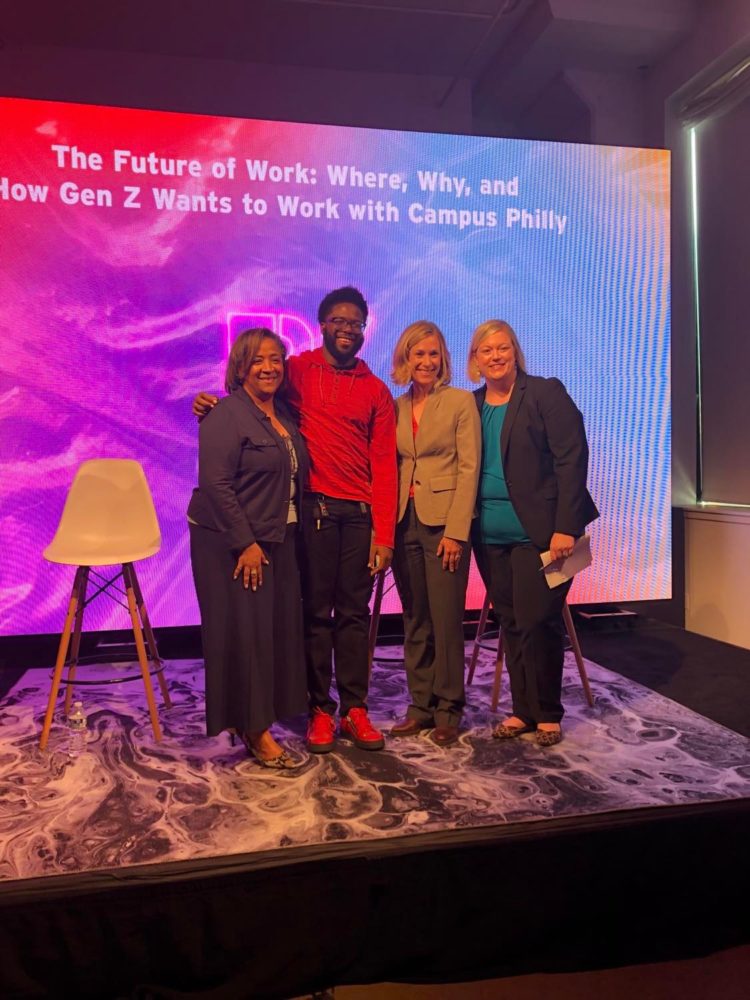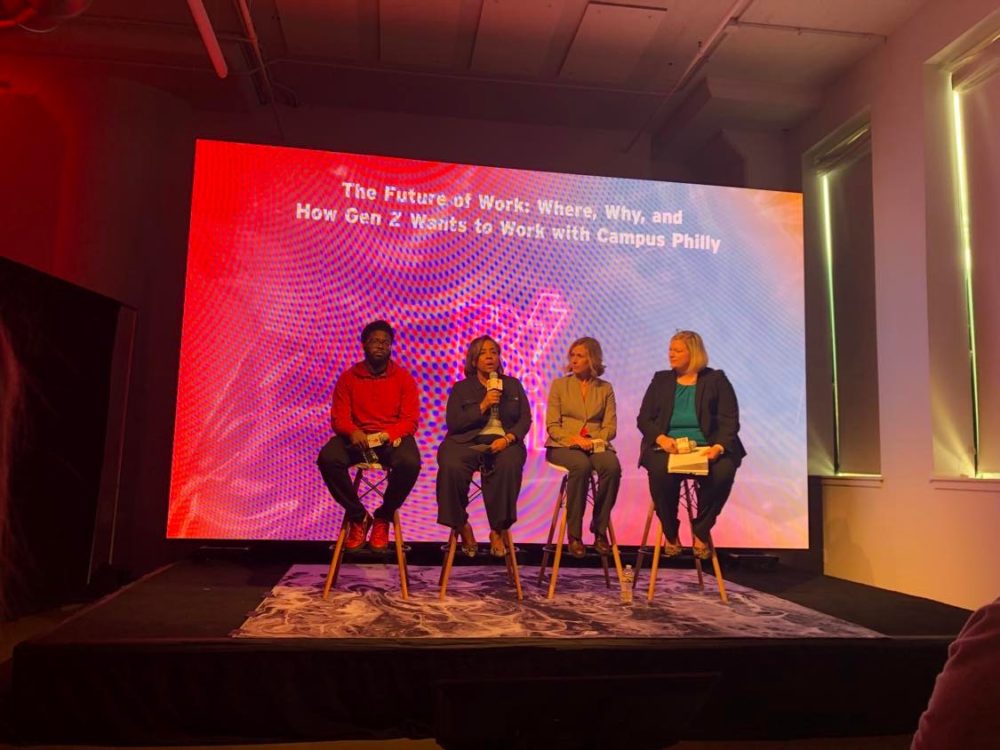A show of hands revealed that there were only a handful of Gen Zers in the crowd, including this reporter, at the 2022 B.PHL Innovation Fest’s “Future of Work: Where, Why, and How Gen Z Wants to Work” session. (The crowd had a very strong millennial representation.)
This small portion of Friday afternoon attendees represents the newest generation to enter the workforce. In starting our careers during a pandemic that disrupted how and where we all do our jobs, we bring a unique perspective to a constantly shifting professional world.
Jennifer Johnson Kebea, president of Campus Philly and the panel’s moderator, specified that when they talk about Gen Z, they mean people born between 1997 and 2012 — and “they’re going to be our future leaders,” she said. “They are leaders right now.”
Nicole Dalberto, director of career services and strategic initiatives at Drexel University, Crystal Ashby, EVP and chief people officer at Independence Health Group, and William Tukes, a current senior and bioengineering major at Temple University all joined Kebea for a discussion about Gen Z in the workplace and what we want out of our first jobs, according to generational trends.
This generation makes up around 12% of the workforce. Dalberto noted that Gen Zers tend to be “digital natives,” meaning we grew up with technology such as iPhones and social media. And when it comes to the workforce, Gen Z is known for being more independent and more competitive than millennials.
Gen Z is still finding its place in the workforce
Gen Z is more likely to leave and look for other work opportunities if they aren’t getting what they need at a job, Ashby said, so employers have to show them why they should stay. Gen Z is still figuring out their place in the workforce and doesn’t fully understand what corporate structure or culture looks like yet, especially because of changes that came with the pandemic, so there’s responsibility for leadership to help them find their way.
“The thing we have to remember is they are also the most bruised because they haven’t had any sense of ‘normal,’” Ashby said. “So we have to think about how you engage with them, how we bring them along, because they’re a generation that hasn’t found their people yet in the workforce.”

Yet the pandemic forced workers to be OK with change and with uncertainty. As some employees came back to work in the office, Ashby said Independence Health Group tried to heed their preferences. She said she suggested a hybrid choice model in which people could come in to the office when they want to, as much as they want to, and at first, her colleagues were unsure about it.
“I said, ‘Listen, we want people back and we want people back for the right reasons,’” she said. “We want people back for collaboration, which is really important for our culture. We want people back to engage on projects. We want people back to help us innovate for the new and the best and the better. So what if we create an opportunity for people to choose when they come in?”
She tied this point of creating choice so employees can do what’s best for them to the fact that right now, there are five generations in the workforce together: traditionalists, baby boomers, Gen X, millennials and Gen Z, who were all raised in different ways and want different things. (Here’s some advice on fostering respect in a multigenerational workforce.)
Gen Z wants a flexible work structure
Ashby said Gen Z are go getters with a desire to be connected and engaged at work. Gen Z likes face-to-face interaction, and it’s more likely to see Gen Zers coming into the office on a hybrid model than other generations. This generation also doesn’t need hour-long meetings everyday, but would rather have quick, casual conversations to check in.
Two years of Zoom classes was rough on this generation as its members completed high school and college. Tukes said the flexibility his hybrid summer internship allowed was appreciated because workers might work better from home on a given day, and enjoy the saved commute time and gas money, but other times it’s nice to go into an office and see people.
Independence Health Group has been hosting office days once a month when they try to entice employees to come into with a giveaway or gathering, Ashby said, as a way to bring people together and allow employees to have those casual moments in the elevator or the hallway. She said employers must listen to Gen Z and ask questions, rather than presuming to understand what they want.
Why focus on Gen Z?
Tukes told Technical.ly after the panel that talking about Gen Z in the workplace is important because it bridges the gap between Gen Z and older generations’ perspectives, and helps to remove assumptions or stigmas around being young in the workforce. It can be difficult to explain to older adults why it’s hard joining the workforce right now, he said.
“It’s a nice way to make us coexist in this world,” Tukes said. “Because we both have problems on each end, that we don’t understand why it’s not working on the other end without talking to each other. So unless we have the conversation, we will always have a disconnection.”
As for me, Technical.ly’s Gen Z representative, a lot of these points resonated. I’m excited to dive into the professional world, though it’s a weird time to be doing so.







